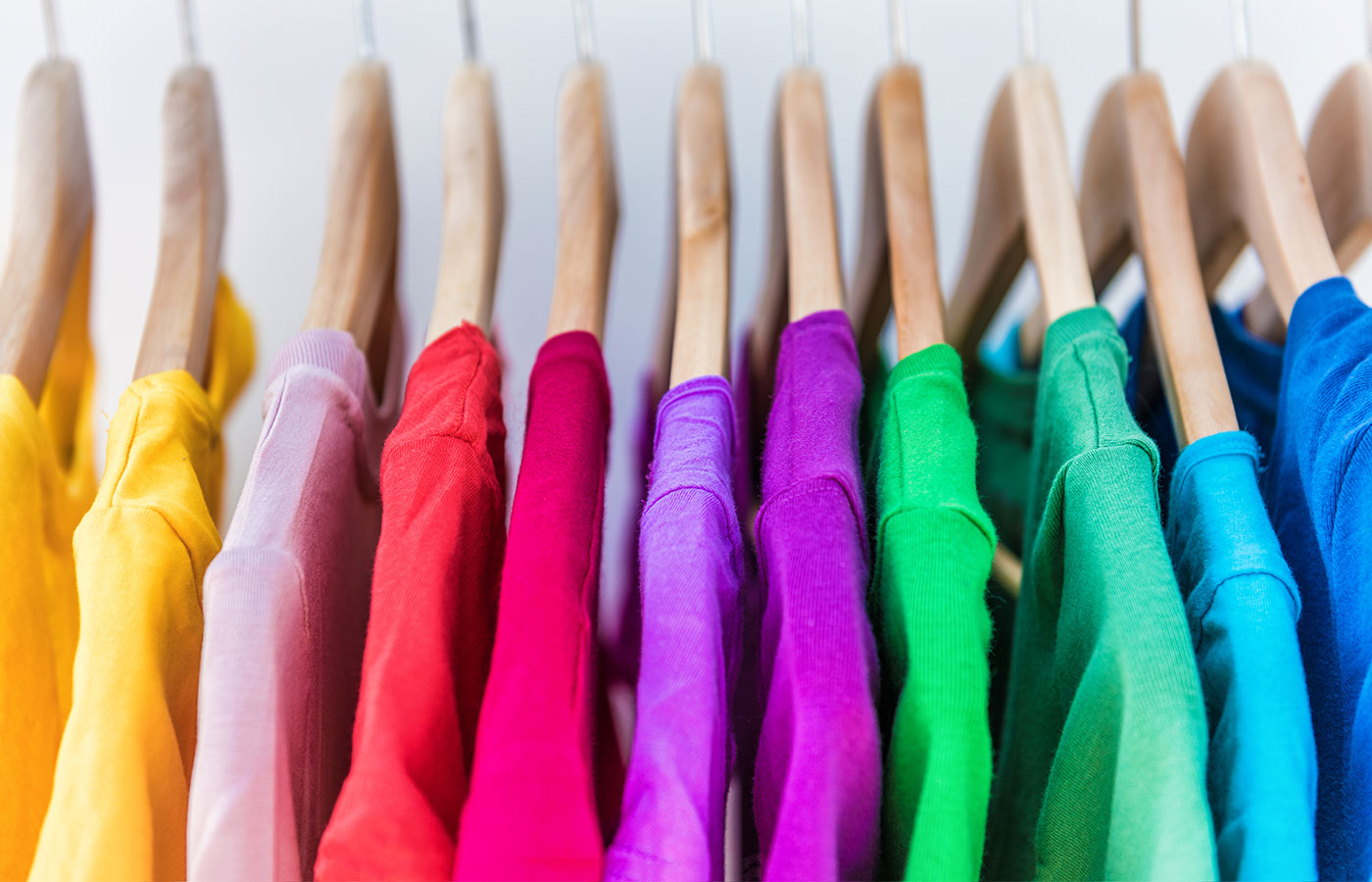Branded Clothing and the Rise of Recycled Fabric Use in Fashion
Wiki Article
Understanding Apparel: The Value of Textile Options in Your Closet
The option of material in clothing plays an essential role in both appearances and performance. Various materials use differing levels of breathability, convenience, and toughness, directly influencing the wearer's experience. Comprehending these subtleties can enhance one's wardrobe considerably. Many forget just how these choices can affect not just individual design, but likewise sustainability. What fabric choices could redefine your closet and align it with both style and duty?The Function of Fabric in vogue and Performance

Usual Material Kinds and Their Attributes
When picking clothing, comprehending the features of typical fabric types is important for making educated choices. Cotton, a widely-used natural fiber, is recognized for its breathability, softness, and convenience, making it appropriate for sportswear and day-to-day garments. Linen, an additional natural alternative, flaunts excellent moisture-wicking buildings and a distinctive structure, suitable for cozy climates.Wool, typically favored for its heat and durability, differs in fineness; merino woollen is soft versus the skin, while coarser kinds are used for outerwear. Artificial materials like polyester and nylon use resilience and resistance to creases, making them popular for activewear and traveling garments. Blends, which incorporate all-natural and artificial fibers, can improve functionality while maintaining convenience. By identifying these fabric features, individuals can pick garments that aligns with their lifestyle and visual preferences.Breathability and Comfort: Selecting the Right Fabrics for Different Climates
Picking the best fabrics for numerous climates can considerably enhance convenience and general wearability. Breathable materials are important in warm environments, as they permit air flow and dampness evaporation. Fabrics such as cotton, linen, and moisture-wicking synthetics successfully draw sweat far from the body, maintaining the wearer cool and dry. On the other hand, in chillier climates, thicker materials like wool or fleece supply insulation while maintaining breathability, making certain warmth without overheating.Additionally, the choice of fabric weight plays a vital function; lightweight fabrics are preferable for summer, whereas larger choices are matched for winter wear. Comprehending the unique residential properties of each material allows individuals to clothe properly for differing climate condition. Ultimately, selecting breathable and comfortable fabrics tailored to certain climates can considerably enhance everyday comfort and improve the overall experience of wearing clothing.Sturdiness and Care: How Textile Affects Long Life of Your Wardrobe
Selecting the right materials can considerably impact the sturdiness and care needs of a closet. Fabrics such as cotton and polyester are understood for their resilience and convenience of maintenance, making them excellent for day-to-day wear. In contrast, fragile materials like silk and lace require more mindful handling and specialized cleansing approaches, which can enhance the moment and initiative needed for care. Branded Clothing.Durability is likewise influenced by the fabric's weave and surface; tightly woven textiles often tend to withstand wear and tear much better than loosely woven alternatives. In addition, artificial blends usually give boosted sturdiness, combining the most effective qualities of multiple fibers.Understanding the care instructions for each and every material is essential, as incorrect drying out or washing can result in premature wear. Inevitably, choosing resilient products can lead to a longer-lasting wardrobe, lowering the regularity of substitutes and adding to an extra lasting fashion optionThe Effect of Material on Fit and Silhouette

Sustainable Fabric Selections: Making Eco-Friendly Decisions
The impact of textile expands beyond fit and silhouette to encompass environmental factors, triggering a growing rate of interest in lasting textile choices. Environment-friendly fabrics, such as organic cotton, hemp, and Tencel, are acquiring traction among customers who prioritize sustainability in their wardrobes. These materials are typically generated with fewer chemicals and water, decreasing their eco-friendly footprint.Additionally, recycled materials, made from post-consumer waste, provide an ingenious service to the textile sector's air pollution problem. Brands significantly accept openness in their sourcing approaches, allowing customers to make educated choices regarding their purchases.Choosing sustainable fabrics not just supports ethical techniques but likewise urges the fashion business to take on even more accountable manufacturing techniques. As understanding of environmental problems rises, individuals are urged to assess the long-term effect of their fabric options, promoting a motion in the direction of a more environmentally conscious and lasting approach to style.
Raising Style: Just How Textile Can Transform a Clothing
While several might focus on color and cut when picking an outfit, the option of fabric plays a necessary duty in elevating style and enhancing general look. Various materials convey unique moods and messages; as an example, silk radiates deluxe and refinement, while jeans offers an informal, kicked back ambiance. The structure and drape of a material can dramatically alter the shape, with structured fabrics giving a polished look and softer ones developing a more fluid, relaxed aesthetic.Moreover, the weight of the fabric affects wearability across periods. Light-weight fabrics like bed linen and cotton are suitable for summer, while heavier materials such as wool and velvet give heat and sophistication in cooler months. Recognizing fabric homes, such as breathability and stretch, also equips this people to make enlightened options that boost comfort without jeopardizing style. Ultimately, the appropriate fabric can change an outfit from normal to phenomenal, making it a vital factor to consider in any wardrobe.Frequently Asked Questions
Exactly how Do I Recognize the Textile Content of My Clothing?
To identify textile material, one can analyze care labels, conduct burn examinations for fiber recognition, or seek advice from textile examples. These approaches aid differentiate products, ensuring educated choices for apparel care and upkeep in daily wear.Can Textile Option Affect My Mood or Self-confidence?
Fabric selection can greatly affect an individual's mood and confidence. Branded Clothing. Specific products may stimulate sensations of comfort or beauty, while others can really feel unflattering or limiting, inevitably influencing self-perception and psychological health throughout the dayWhat Fabrics Are Ideal for Sensitive Skin?
For individuals with delicate skin, natural fabrics like cotton, linen, and bamboo are commonly advised. These products are breathable, hypoallergenic, and much less likely to trigger irritation, making them suitable choices for comfort and skin health.Just how Do I Properly Laundry and Look After Different Fabrics?
To appropriately wash and care for different fabrics, one must consider each material's details demands, consisting of temperature setups, cleaning agents, and drying approaches, making certain durability and maintaining the fabric's initial high qualities for optimal usage.Exist Certain Fabrics for Athletic or Efficiency Use?
Athletic or efficiency wear typically utilizes materials such as spandex, polyester, and nylon. These products are made for moisture-wicking, breathability, and versatility, enhancing movement and convenience throughout exercises while giving longevity and assistance. Alternatively, in colder environments, thicker materials like woollen or fleece give insulation while preserving breathability, making sure warmth without overheating.Additionally, the choice of textile weight plays a vital function; light-weight textiles are preferable for summer season, whereas heavier alternatives are fit for winter season wear. In comparison, delicate products like silk and shoelace need even more careful handling and specialized cleaning methods, which can raise the time and initiative required for care.Durability is additionally affected by the material's home weave and finish; securely woven textiles often tend to stand up to wear and tear better than freely woven options. In contrast, stiff textiles can limit activity yet supply a traditional, polished look.Moreover, the thickness and texture of the fabric can affect the aesthetic assumption of body form. The impact of textile prolongs past fit and silhouette to include ecological aspects, prompting an expanding passion in sustainable textile choices. The texture and drape of a textile can considerably alter the shape, with structured materials offering a refined appearance and softer ones creating a much more fluid, loosened up aesthetic.Moreover, the weight of the textile influences wearability across periods.Report this wiki page